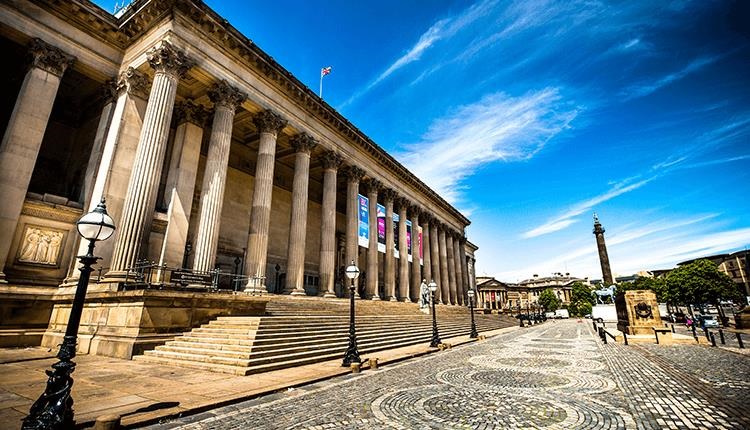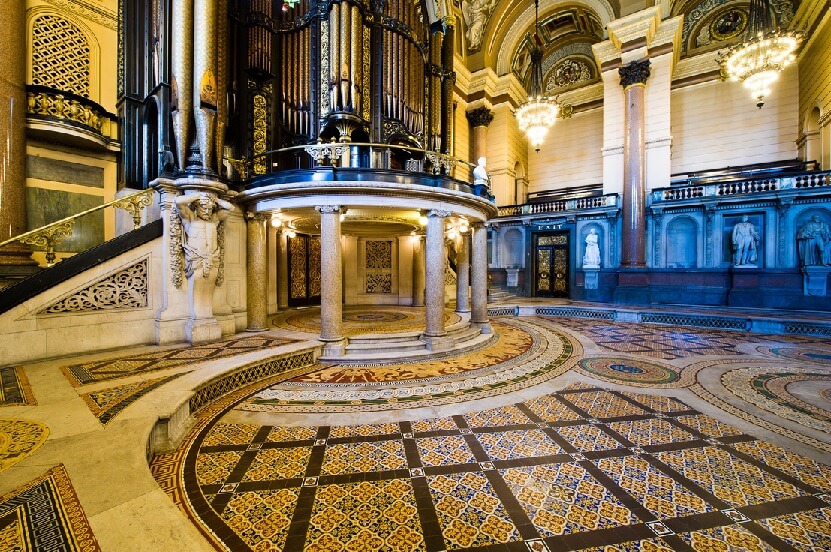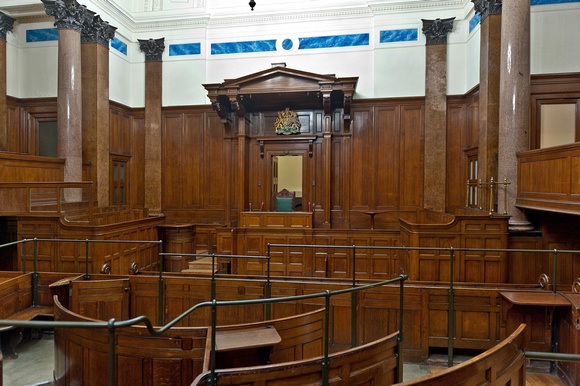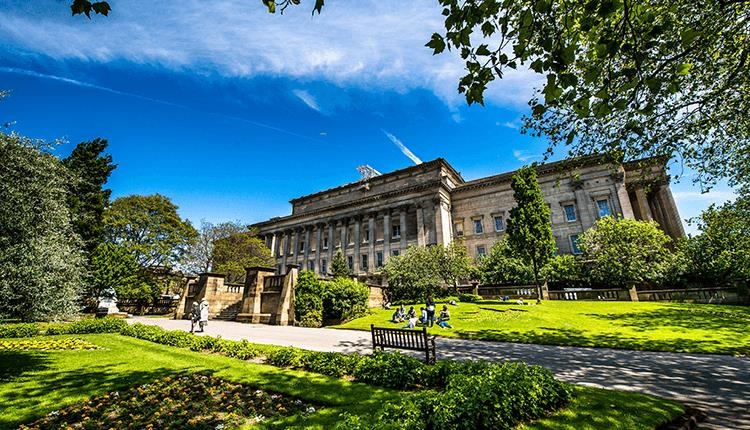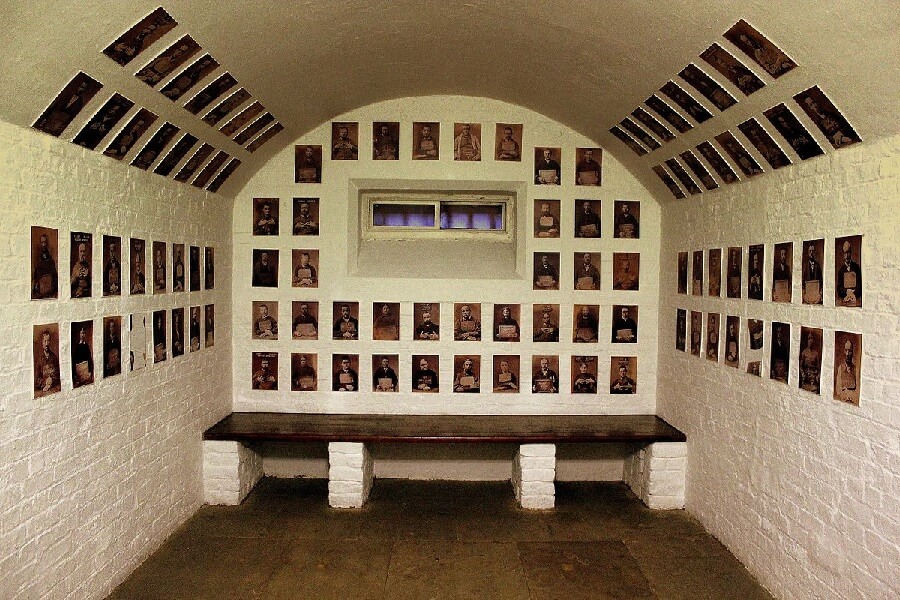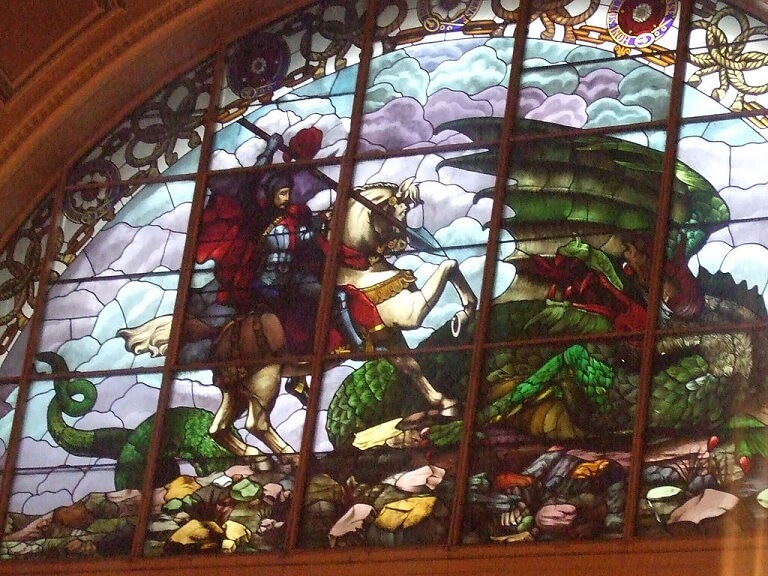27 May Local History Class Held at St. George’s Hall
St. George’s Hall
As part of their local history classes we took learners to St. Georges Hall. For many this was the first time they had visited the historic building and they were surprised and shocked at the grandeur and history surrounding this building. St. George’s Hall was also used as a courtroom and learners toured the prisoner holding cells and made the daunting walk from the cells up into the courtroom. We viewed the grand hall from the balcony which gave us a fantastic view of the hall, the organ and the stained glass window.
The lesson was finished off by a picnic lunch held in St. George’s Hall gardens.
St George’s Hall is on Lime Street in the centre of Liverpool, opposite Lime Street railway station. It is a building in Neoclassical style which contains concert halls and law courts, and is recorded in the National Heritage List for England as a designated Grade I listed building. On the east side of the hall, between it and the railway station, is St George’s Plateau and on the west side are St John’s Gardens. The hall is included in the William Brown Street conservation area.
History
The site of the hall was formerly occupied by the first Liverpool Infirmary from 1749 to 1824. Triennial music festivals were held in the city but there was no suitable hall to accommodate them. Following a public meeting in 1836 a company was formed to raise subscriptions for a hall in Liverpool to be used for the festivals, and for meetings, dinners and concerts. Shares were made available at £25 each and by January 1837 £23,350 (equivalent to £2,084,110 in 2018) had been raised. In 1838 the foundation stone was laid to commemorate the coronation of Queen Victoria.
A competition in 1839 to design the hall was won by Harvey Lonsdale Elmes, a London architect aged 25 years. There was a need for assize courts in the city and a competition to design these was also won by Elmes. The original plan was to have separate buildings but in 1840 Elmes suggested that both functions could be combined in one building on a scale which would surpass most of the other public buildings in the country at the time. Construction started in 1841 and the building opened in 1854 (with the small concert room opening two years later). Elmes died in 1847 and the work was continued by John Weightman, Corporation Surveyor, and Robert Rawlinson, structural engineer, until in 1851 Charles Cockerell was appointed architect. Cockerell was largely responsible for the decoration of the interiors. During the 2000s a major restoration of the hall took place costing £23m and it was officially reopened on 23 April 2007 by Prince Charles.
Plan
The Concert Hall is the largest area, rectangular in shape, and occupies the centre of the building with an organ on its north wall. To the north of the Concert Hall is the Civil Court and beyond this is the elliptical Small Concert Room. To the south of the Concert Hall are the Crown Court and the Grand Jury Room. Smaller court rooms are on the periphery of the larger courts. The floor below consists of a cavernous basement with cells for prisoners along the west wall.
Exterior
The main entrance is in the centre of the east façade and is approached by a wide flight of steps. On the steps is a statue of Benjamin Disraeli by Charles Bell Birch. At the south-east corner is a bronze statue of Major-General William Earle by the same sculptor. This front has a central portico of 16 Corinthian columns flanked on each side by series of square, unfluted columns, between which are reliefs that were added between 1882 and 1901 by Thomas Stirling Lee, C. J. Allen and Conrad Dressler. The west front has a projecting central part with square columns supporting a large entablature. The south front has a portico of eight columns, two columns deep, on steps above a rusticated podium. The north front has a semicircular apse with columns and three doorways which are flanked by statues of nereids and tritons bearing lamps which were designed by Nicholl. The tympanum which once adorned the southern pediment was removed for safety’s sake in 1950, and subsequently lost, reputedly turned into hardcore.
Interior
The main entrance crosses a corridor and leads into the Concert Hall. The roof is a tunnel vault carried on columns of polished red granite. The walls have niches for statues and the panelled plasterwork of the vault has allegorical figures of Virtues, Science and Arts. The highly decorated floor consists of Minton tiles and it is usually covered by a removable floor to protect it. It contains over 30,000 tiles. The doors are bronze and have openwork panels which incorporate the letters SPQL (the Senate and the People of Liverpool) making an association with the SPQR badge of ancient Rome.
The organ is at the north end and at the south end is a round arch supporting an entablature between whose columns is a gate leading directly into the Crown Court. The niches contain the statues of William Roscoe by Chantrey, Sir William Brown by Patrick MacDowell, Robert Peel by Matthew Noble, George Stephenson by John Gibson, Hugh Boyd M‘Neile by George Gamon Adams, Edward Whitley by A. Bruce Joy, S. R. Graves by G. G. Fontana, Rev Jonathan Brookes by B. E. Spence, William Ewart Gladstone by John Adams-Acton, the 14th Earl of Derby by William Theed the Younger, the 16th Earl of Derby by F. W. Pomeroy, and Joseph Mayer by Fontana. In 2012 a statue of Kitty Wilkinson by Simon Smith was unveiled, the first in 101 years, and the first of a woman. The stained glass in the semicircular windows at each end of the hall was added in 1883–84 by Forrest and Son of Liverpool. Sharples and Pollard regard this as “one of the greatest Victorian interiors”.
The Crown Court has a tunnel vault on red granite columns and the Civil Court a coved ceiling on grey granite columns. The south entrance is approached through the portico, is low and has Ionic columns. Below this is a larger vaulted space which was adapted to form a new entrance in 2003–05. The north entrance hall has Doric columns on its landing and a Doric ambulatory around the apse. A copy of part of the Parthenon frieze runs round its walls. In the entrance is a statue of Henry Booth by Theed the Younger. The Small Concert Room is almost circular and is lavishly decorated. In the past it was known as the Golden Concert Room and it was regularly host to Charles Dickens, who held many of his readings there. A balcony supported by caryatids runs round the room. At the back of the platform are attached columns, decorated with arabesques, supporting a frieze with griffins and between the columns are mirrors. The concert room was refurbished between 2000 and 2007. This included making alterations to comply with the Disability Discrimination Act, restoring the historical painting scheme and restoring the chandelier, which consists of 2,824 crystal pieces. It has seating for an audience of 480.
In the basement is part of a unique heating and ventilation system devised by Dr Boswell Reid. This was the first attempt at providing air conditioning in a public building in the United Kingdom, its aim being to warm and ventilate the building without draughts. Air was warmed by five hot water pipes which were heated by two coke-fired boilers and two steam boilers. The air was circulated by four fans 10 feet (3 m) wide. It was controlled by a large number of workers opening and closing a series of canvas flaps. In 2005 the Heritage Group of the Chartered Institution of Building Services Engineers awarded its first Blue Plaque to St George’s Hall recognising it as the World’s First Air Conditioned Building.
